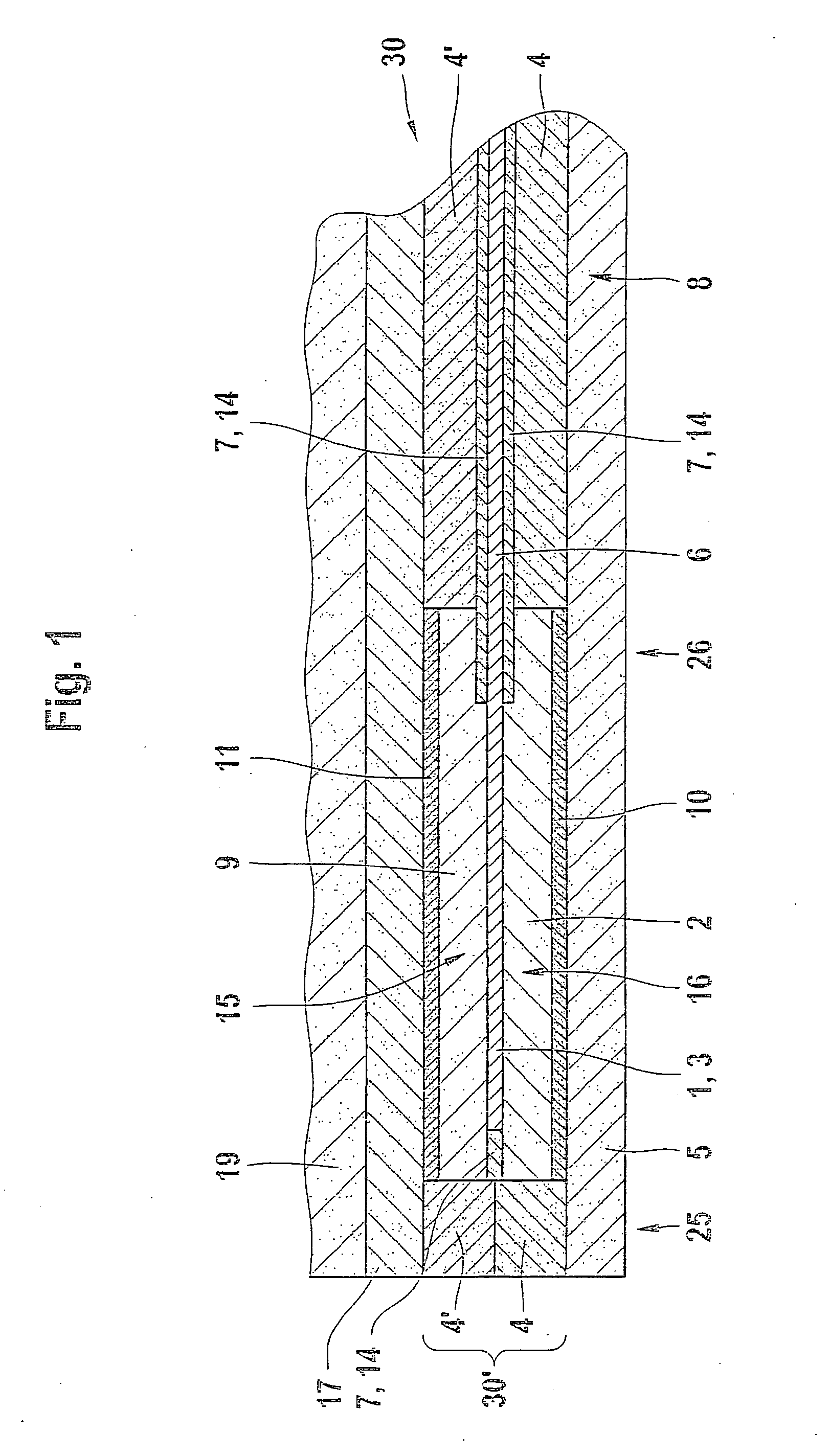Sensor element, in particular a planar gas sensor element
a sensor element and gas sensor technology, applied in the field of sensor elements, can solve the problems of mechanical stresses which occur in the sensor element during operation and/or manufacture, and achieve the effects of improving heat transfer, preventing unwanted heat dissipation, and poor thermal conductivity
- Summary
- Abstract
- Description
- Claims
- Application Information
AI Technical Summary
Benefits of technology
Problems solved by technology
Method used
Image
Examples
Embodiment Construction
[0027]FIG. 1 shows a sensor element 30 having a sensor structure 19 and a heater area 30′. With regard to the production of sensor element 30 according to FIG. 1, known techniques are used, i.e., ceramic green films onto which other layers are printed as needed, then stacked, laminated and finally sintered to form sensor element 30.
[0028]FIG. 1 shows in detail a sintered ceramic sensor element 30 in the form of a planar gas sensor element having a solid electrolyte including a bottom layer or a substrate 5 of zirconium dioxide on which there is a second intermediate layer 10 in some areas, printed onto the ceramic green film that forms substrate 5 at the time of its manufacture. A second spacer layer 4 of zirconium dioxide is also provided and forms a lower frame, thus defining a trough-shaped second recess 16 into which a second inlay 2 is placed after the printing of second intermediate layer 10 and deposition of second spacer layer 4 onto substrate 5. In the example described he...
PUM
 Login to View More
Login to View More Abstract
Description
Claims
Application Information
 Login to View More
Login to View More - R&D
- Intellectual Property
- Life Sciences
- Materials
- Tech Scout
- Unparalleled Data Quality
- Higher Quality Content
- 60% Fewer Hallucinations
Browse by: Latest US Patents, China's latest patents, Technical Efficacy Thesaurus, Application Domain, Technology Topic, Popular Technical Reports.
© 2025 PatSnap. All rights reserved.Legal|Privacy policy|Modern Slavery Act Transparency Statement|Sitemap|About US| Contact US: help@patsnap.com



